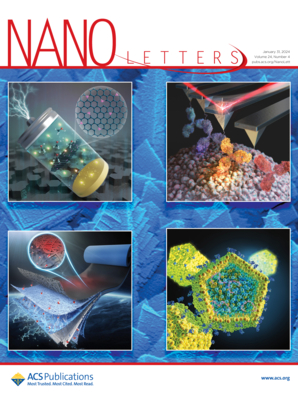Deep-Learning-Assisted Microfluidic Immunoassay via Smartphone-Based Imaging Transcoding System for On-Site and Multiplexed Biosensing
IF 9.6
1区 材料科学
Q1 CHEMISTRY, MULTIDISCIPLINARY
引用次数: 0
Abstract
Point-of-care testing (POCT) with multiplexed capability, ultrahigh sensitivity, affordable smart devices, and user-friendly operation is critically needed for clinical diagnostics and food safety. This study presents a deep-learning-assisted microfluidic immunoassay platform that uses a smartphone-based imaging transcoding system, polystyrene microsphere-based encoding, and artificial-intelligence-assisted decoding. Microspheres of varying sizes act as multiprobes, with their quantities correlating to target concentrations after an immunoreaction and separation–filtration within the microfluidic chip. A smartphone with intelligent decoding software captures images of multiprobes from the chip and performs classification, counting, and concentration calculations. The “encoding–decoding” strategy and integrated microfluidic chip design allow these processes to be completed in simple steps, eliminating the need for additional immunomagnetic separation. As a proof of concept, this platform successfully detected multiple respiratory viruses and antibiotics in various real samples with high sensitivity within 30 min, demonstrating great potential as a smart, universal toolkit for next-generation POCT applications.

通过基于智能手机的成像转码系统进行深度学习辅助微流控免疫测定,实现现场和多重生物传感
具有多路复用能力、超高灵敏度、价格合理的智能设备和用户友好操作的护理点检测(POCT)对于临床诊断和食品安全至关重要。本研究提出了一种深度学习辅助的微流控免疫分析平台,该平台使用基于智能手机的成像转码系统、基于聚苯乙烯微球的编码和人工智能辅助解码。不同大小的微球作为多探针,其数量与微流控芯片内免疫反应和分离过滤后的靶浓度相关。带有智能解码软件的智能手机从芯片上捕获多个探针的图像,并进行分类、计数和浓度计算。“编码解码”策略和集成的微流控芯片设计允许这些过程在简单的步骤中完成,消除了额外的免疫磁分离的需要。作为概念验证,该平台在30分钟内以高灵敏度成功检测出各种真实样品中的多种呼吸道病毒和抗生素,显示出作为下一代POCT应用的智能通用工具包的巨大潜力。
本文章由计算机程序翻译,如有差异,请以英文原文为准。
求助全文
约1分钟内获得全文
求助全文
来源期刊

Nano Letters
工程技术-材料科学:综合
CiteScore
16.80
自引率
2.80%
发文量
1182
审稿时长
1.4 months
期刊介绍:
Nano Letters serves as a dynamic platform for promptly disseminating original results in fundamental, applied, and emerging research across all facets of nanoscience and nanotechnology. A pivotal criterion for inclusion within Nano Letters is the convergence of at least two different areas or disciplines, ensuring a rich interdisciplinary scope. The journal is dedicated to fostering exploration in diverse areas, including:
- Experimental and theoretical findings on physical, chemical, and biological phenomena at the nanoscale
- Synthesis, characterization, and processing of organic, inorganic, polymer, and hybrid nanomaterials through physical, chemical, and biological methodologies
- Modeling and simulation of synthetic, assembly, and interaction processes
- Realization of integrated nanostructures and nano-engineered devices exhibiting advanced performance
- Applications of nanoscale materials in living and environmental systems
Nano Letters is committed to advancing and showcasing groundbreaking research that intersects various domains, fostering innovation and collaboration in the ever-evolving field of nanoscience and nanotechnology.
 求助内容:
求助内容: 应助结果提醒方式:
应助结果提醒方式:


